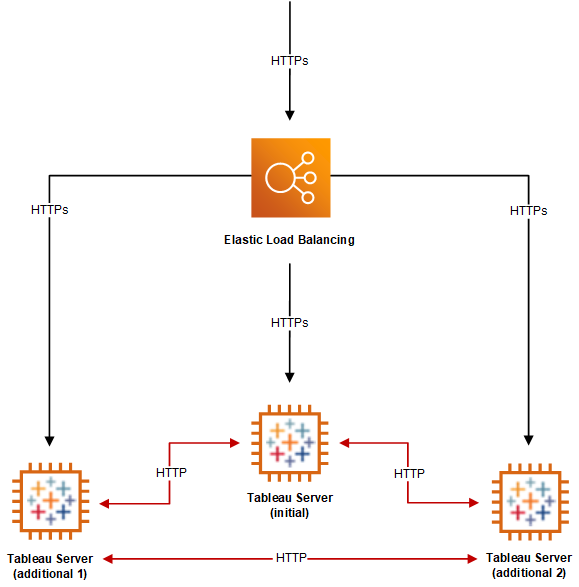Scaling Tableau Server on AWS
This is archived content
Deployments on public clouds continue to be supported but the content for third-party public cloud deployments is no longer updated.
For the latest Tableau Server deployment content, see the Enterprise Deployment Guide(Link opens in a new window) and the Deploy(Link opens in a new window) section of Tableau Server help.
For those customers who have access, we recommend Tableau Cloud. For more details, see:
- Tableau Cloud Manual Migration Guide
- Tableau Cloud Trial for Admin(Link opens in a new window)
- Tableau Cloud: Get Started for Admin(Link opens in a new window)
Introduction
Tableau Server is designed to scale up with more CPU cores and memory, and scale out when you add servers. This architecture allows you to maximize the use of compute resources while giving you the ability to scale massively.
To build in redundancy, you need to add additional servers, which host copies of the repository, file store, and other processes. In this scenario, you should isolate the initial server in its own node, and it should ideally run as few of the server processes as possible.
Note: Although you can split an 8-core license onto two 4-core machines, we recommend that you scale in increments of 8-core machines only.
Load Balancing
On AWS, Elastic Load Balancing (ELB) automatically distributes incoming application traffic across multiple Amazon EC2 instances in the cloud. It enables you to achieve greater levels of fault tolerance in your applications, and seamlessly provides the required amount of load balancing capacity needed to distribute application traffic.
You can use ELB to distribute requests across multiple gateways in a Tableau Server cluster. In the figure below, all three nodes have gateways, which are used to route requests to available server processes. Unlike the repository process, there aren’t any passive or standby gateway processes—all gateways are active. When you add a load balancer to a Tableau Server cluster, the URL that’s accessed by Tableau Server users belongs to the load balancer, not to the initial Tableau Server.

High Availability
Now that you have provided redundancy for the file store, repository, and gateway by adding additional nodes, you can additionally build redundancy for the initial Tableau Server. You can do this by creating a backup of the initial Tableau Server. Although the backup must be licensed during installation, it does not count as one of the three environments allowable under the Tableau end user license agreement (EULA).
To configure for high availability, you need to run a failover cluster. If you configure for high availability, the initial Tableau Server may be running few or no Tableau Server processes. For more information, see High Availability in the Tableau Server Help.
